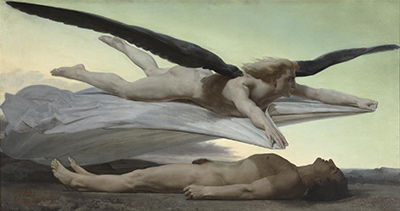Art takes form in different forms, but all forms manifest as not only products of an artist’s convictions and purpose but also persecutions and personal traits.
The people who make the most immaculate interpretations of art are those that understand both intricate details of the art and the intimate those traits of the artists that made them. When studying the painting Equality before Death by William Bouguereau, failure to muse over his life at that particular time could impose misleading ramifications in conclusions derived.
Therefore, it would prove somewhat instrumental to digress to the artist before proceeding.
Life of Bouguereau at Creation of Equality before Death
Back in 1848, Europe was a stratified socialist society that cared very little for equality. People born of high families were expected to behave in defined manners and perform high exploits. Equality was neither worked towards nor welcome. It could have only achieved in the afterlife. William Bouguereau was himself under intense pressure from his family to honour them by making something worthy of mention with his life.
He was in an imposed hurry to make something of himself for the sake of his family and not his own satisfaction. Simply put, he could have felt that he was living his life for others and not himself. At 23 years of age, life was cast in a sombre mood of pressure and expectation. Such a mood drove him to think of the inevitability of death and just how vein subjugating others could have been since all were destined for the same fate.
What the Painting ‘Equality before Death’ Meant
The large format painting of the angel of death covering a corpse of a young man with a shroud evoked a sombre mood in those who viewed it. It featured a laconic style and a frieze-like structure. It seemed to communicate to people of that time and place when time death inevitably covers people with its shroud, their lives then become meaningless if they did not accomplish much when alive.
Also, the naked nature in which the dead young man in the painting was captured signified the primitivism of material possession in the eyes of death. As humans come into earth naked and without anything, they are bound to leave the world in a similar state. Certainly, a simple glimpse at the painting would remind a viewer of the anxiety that William Bouguereau endured impressing his family and of the political changes that characterised the onset of the liberalist movement.




